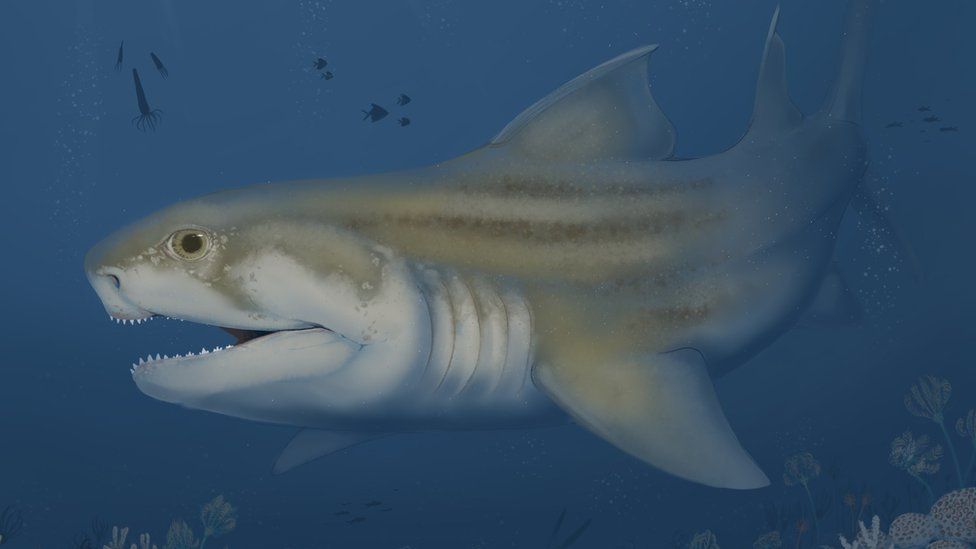Experts discover two species of prehistoric shark
- Published
- comments

The Glikmanius careforum was thought to have a short, powerful jaw
Scientists have identified, not one, but TWO new species of shark from fossilised remains in Kentucky's Mammoth Cave National Park in the United States.
These scary prehistoric fish are thought to have lived more then 325 million years ago and have been given tongue-twisting names.
The Troglocladodus trimblei and the Glikmanius careforum are both thought to have been 10 to 12 feet long - that's around three and a half metres.
They were about the same size as a modern-day oceanic whitetip shark.
Rick Toomey, cave guide and palaeontologist at Mammoth Cave, said no-one expected Mammoth Cave to contain so many treasures.
He said these sharks were fast and lethal, even possibly eating other sharks.
The cave system at Mammoth lives up to its name, and stretches for over 400 miles in some places - it's thought to be the world's longest underground tunnel system.
The fossilised shark tooth was accidentally spotted in the ceiling of the cave system in Kentucky
This makes it a fascinating location for palaeontologists to investigate, because most of the tunnels are untouched by weather, humans or other elements.
It means fossils and even prehistoric shark teeth are perfectly preserved in the rock.
The Troglocladodus trimblei was discovered by a cave worker by accident.
Barclay Trimble (who gave the new shark its name) tagged along on a research mission to see the jaw fossil of the Glikmanius careforum in 2019.
According to Rick Toomey, Barclay stumbled upon a fossil embedded in the ceiling.
In the past 25 years alone, at least 70 species of prehistoric marine animals have been discovered in the hard to reach areas of the cave.
- Published10 June 2022
- Published7 July 2021
- Published23 March 2021
